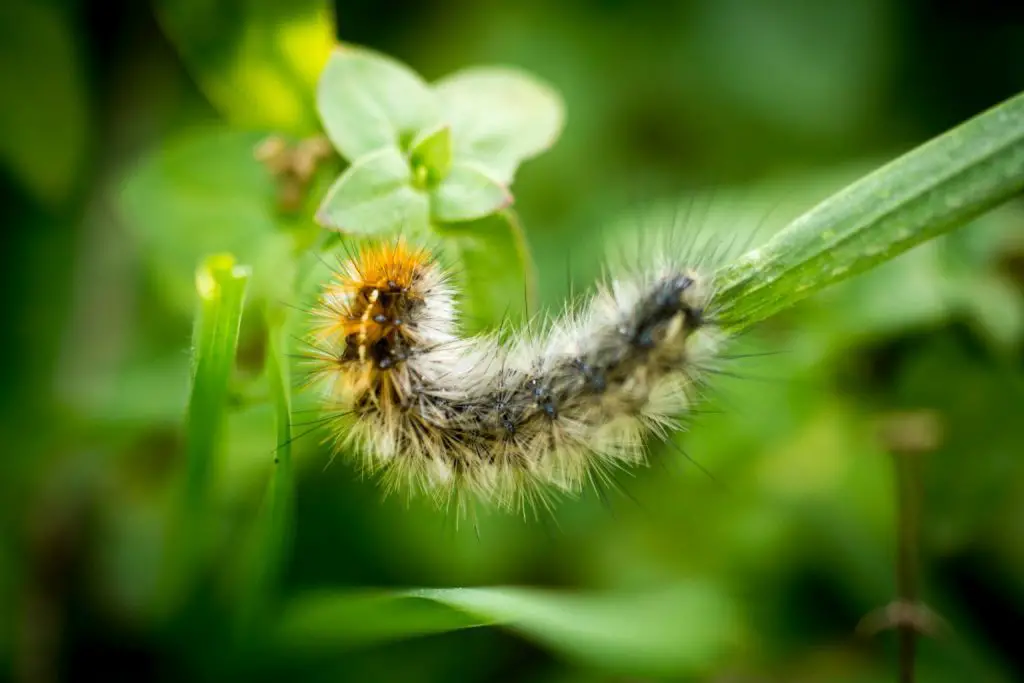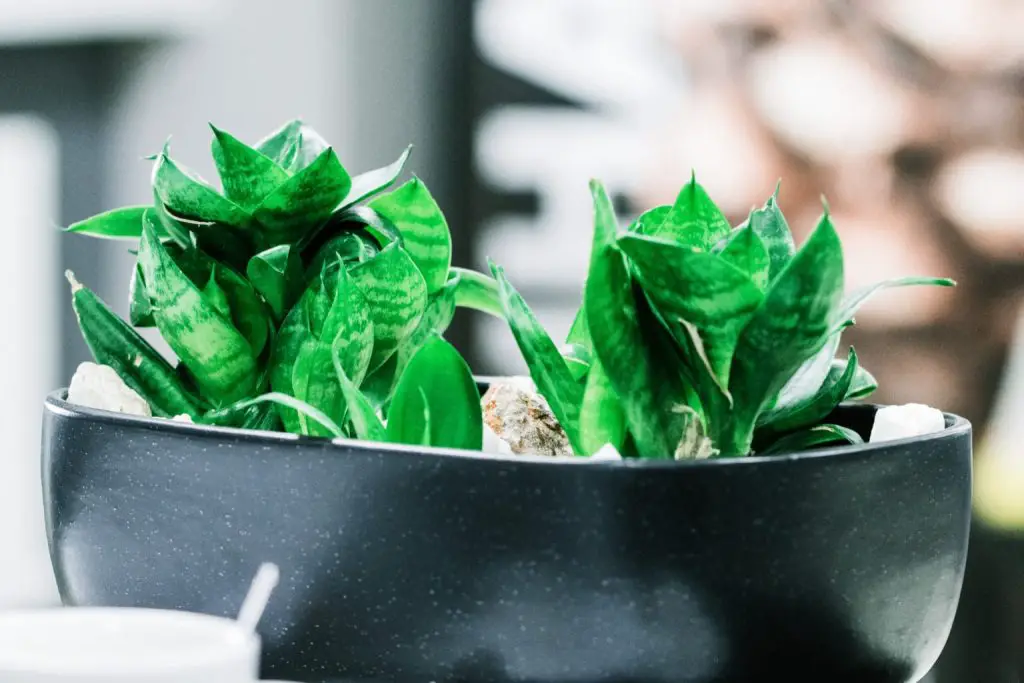The snake plant is an ornamental plant often found in gardens and homes to beautify the space and also has many feng shui meanings according to Eastern culture. However, if you do not know how to care for it properly, it is very easy for the snake plant to have leaf spots. So what is the cause of snake plant leaf spots and how to fix this condition?
Contents
Why does my snake plant have brown spots,leaf spots?

Snake plant has leaf spots due to being affected by fungi. (Source: Internet)
Snake plants often get leaf spots because they are susceptible to fungal infections because their leaves retain moisture longer than most other houseplants. Moist environment creates suitable conditions for parasitic fungi to grow, from which the disease will develop and spread very quickly. Red leaf spot, leaf blight, and rust are three of the most common fungal diseases that can damage your plants.
- ✦
Red leaf spot is a very complex fungal disease caused by Helminthosporium bacteria in high temperature and humidity conditions. When a snake plant has red leaf spots on its stem, there are often small red or red-brown spots.
- ✦
Leaf blight is caused by a fungus called Sclerotium rolfsii in hot, humid environments. Besides the appearance of brown spots on the stem, your tiger leaf plant may also droop when affected by this fungus. The leaves will turn yellow and even light brown if not treated promptly. When the fungus attacks the tree roots, the tiger sloth tree will die.
- ✦
Rust is a fungal disease that is common in tomatoes, beans, grass… but it can also affect your snake plant. In the early stages, the pathogen usually attacks the white parts under the leaves. The white parts begin to gradually turn orange-brown and finally black in the final stage.
Due to an insect attack

Snake plant has leaf spots due to insect attack (Source: Internet)
In addition, the cause of snake plant leaf spots is also due to insect attack. Most plant pests prefer snake plants to other houseplants, for example mites, spiders and mealybugs. The average spider is about 0.04 inches in size and many can gather on snake plant leaves at once. Once the spider or mealybug gets inside, they start eating the cells to suck out the sap inside. The areas bitten by the spider will turn brown spots. When severely infected, snake plant leaves will begin to curl and lose their shape.
How to fix snake plant leaf spots
Treat plant diseases
When a snake plant has leaf spots caused by fungus, if not treated quickly, it can kill your snake plant. To treat red leaf spot, about every two weeks, you should use a fungicide on the affected area. If you are concerned about damaging your tree and surrounding plants in your indoor garden with chemicals, you can make your own chemical-free fungicide at home.
Eliminate insects

To eliminate insects that cause snake plant leaf spots, you can take a cotton swab soaked in isopropyl alcohol and apply the swab directly to the aphid spot. Make sure the alcohol solutions are 70% concentrated for best results. However, when using it, you should also pay attention. If you pour too much isopropyl alcohol, it can lead to burning of your snake plant leaves.
Snake plant care tips to avoid leaf spots

Snake plant is an easy plant to raise, rarely gets sick, and only when cared for incorrectly will the plant encounter the above conditions. Therefore, you should pay attention to the plant’s water, light and nutritional needs to prevent snake plant leaf spots .
- ✦
Watering : You only need to water the plant 1 to 2 times per week.
- ✦
Light : You should not leave the plant in the harsh sunlight of 40 degrees or place it in the shade for too long.
- ✦
Fertilization : Snake plants also need little nutrition, so you should only need to fertilize once a month or less to avoid excess nutrients.
Above are some causes as well as ways to fix snake plant leaf spots . Cleanipedia hopes that this article has provided useful information so you can easily care for your family’s snake plant.



